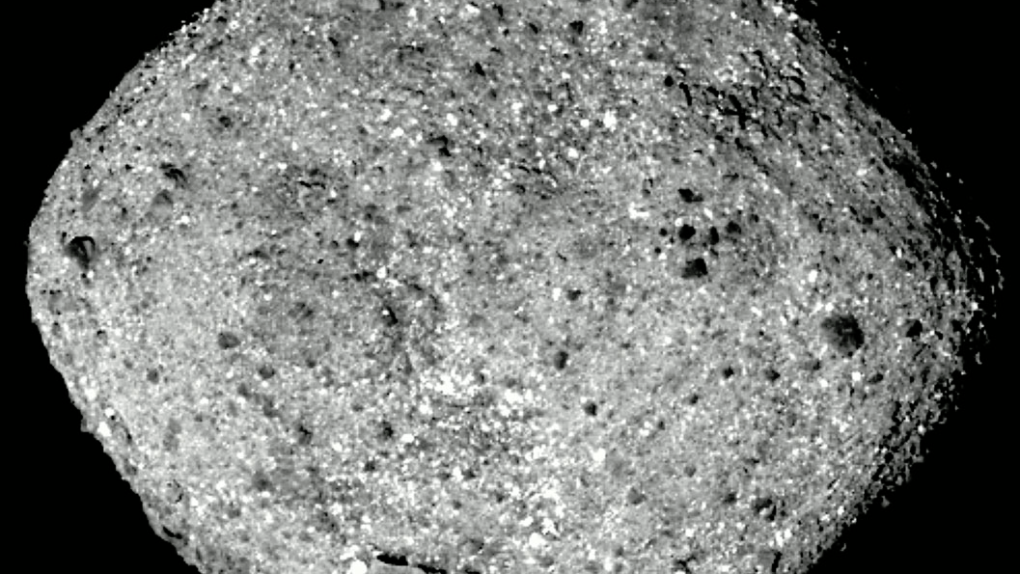NASA’s OSIRIS-REx asteroid probe only just arrived at its target a week ago but it’s already making important scientific observations of the space rock known as Bennu.
The mission seeks to learn as much about the asteroid as possible and NASA thinks it might reveal clues about the early days of the solar system and the material that ultimately formed Earth and the planets in our neighborhood. Now, just days after the spacecraft arrived at the rock, NASA is announcing that it’s already found evidence of water locked in some of Bennu’s clay. This is a tantalizing hint at the asteroid’s past but might actually raise more questions than it answers.
“The presence of hydrated minerals across the asteroid confirms that Bennu, a remnant from early in the formation of the solar system, is an excellent specimen for the OSIRIS-REx mission to study the composition of primitive volatiles and organics,” Amy Simon of NASA’s Goddard Space Flight Center said in a statement. “When samples of this material are returned by the mission to Earth in 2023, scientists will receive a treasure trove of new information about the history and evolution of our solar system.”
The samples that are eventually returned to Earth with tell scientists a lot about what asteroids are made of, but determining exactly where the water on Bennu originated will be next to impossible. As NASA notes, the asteroid is too small to have ever held liquid water on its own, meaning that the frozen water the probe detected is left over from a time in the distant past when Bennu was part of a much larger body.
The discovery of water on Bennu is definitely exciting, but scientists will need to temper their joy just a bit considering it’ll be a long time before OSIRIS-REx actually returns samples back to Earth. The probe will survey the asteroid for the next year or so before doing a gentle touch-and-go maneuver to snag some material and then head back to Earth sometime in 2023.








